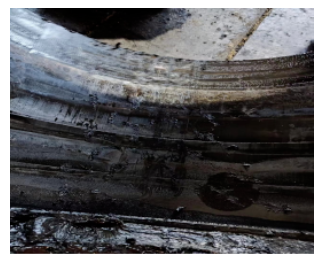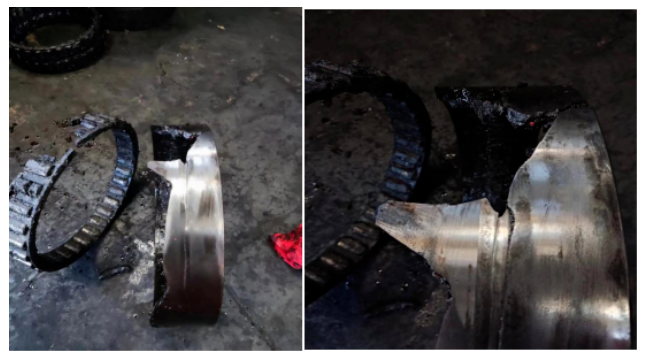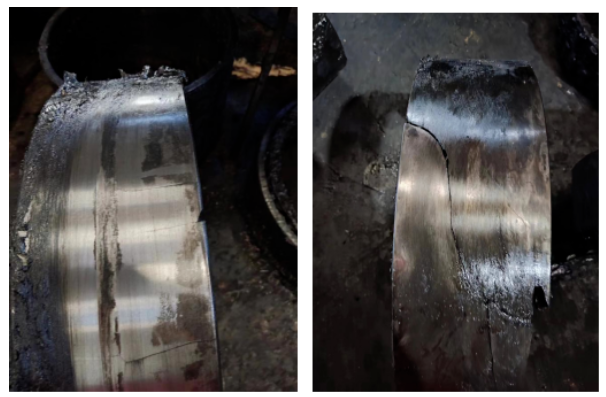
Abstract: In the process of production and processing of bearings, there are many factors that affect the life of bearings, such as bearing materials, structural design, processing and manufacturing, bearing speed, bearing load, lubrication, cooling and other reasons. This time, we mainly explore the impact of the materials used in bearings on the service life of bearings from the aspect of bearing materials.
The early failure forms of rolling bearings are mainly rupture, plastic deformation, wear, corrosion and fatigue, which are mainly contact fatigue under normal conditions. In addition to the working environmental conditions, the failure of bearing parts is mainly restricted by the hardness, strength, toughness, wear resistance, corrosion resistance and internal stress state of steel. The main factors affecting these properties and states are the proportion of various metal elements in the alloy, the temperature change of the alloy during the heat treatment process.
1 Metal elements: chromium, manganese, nickel, molybdenum
In terms of metal elements, common chromium, manganese, nickel and molybdenum are briefly introduced.
Chromium (Cr) Chromium can increase the hardenability of steel and has a secondary hardening effect, which can improve the hardness and wear resistance of carbon steel without making the steel brittle.
Manganese (Mn) Manganese is a good deoxidizer and desulfurizer. Steel generally contains a certain amount of manganese, which can eliminate or weaken the hot brittleness of steel caused by sulfur, thereby improving the hot working performance of steel. The solid solution formed by manganese and iron improves the hardness and strength of ferrite and austenite in steel; At the same time, it is an element formed by carbides, which enters the cementite to replace a part of iron atoms. Manganese plays a role in refining pearlite by reducing the critical transition temperature in steel, and also indirectly plays a role in improving the strength of pearlite steel. Manganese is second only to nickel in its ability to stabilize austenitic structures and also strongly increases the hardenability of steel.
Nickel (Ni) Nickel strengthens ferrite and refines pearlite in steel, the overall effect is to increase strength, and the effect on plasticity is not significant.
Molybdenum (Mo) Molybdenum in steel can improve hardenability and thermal strength, prevent temper brittleness, increase remanence and coercivity and corrosion resistance in some media. In tempered steel, molybdenum can make the larger section of the parts quenched deep, quenched through, improve the tempering resistance or tempering stability of the steel, so that the parts can be tempered at higher temperatures, so as to more effectively eliminate (or reduce) residual stress, improve plasticity.
2 Heat treatment of metal
In the heat treatment of metals, heating temperature, holding time and cooling method are the three most important factors affecting heat treatment.
The process of heat treatment: First of all, the parts need to be heated to a certain temperature, held for a certain time, and then cooled in oil or water. After cooling, the furnace is tempered immediately (500 ~ 650℃) to reduce the quenching stress and adjust the composition of the structure, so as to meet the mechanical performance requirements.
The name and characteristics of each structure in the alloy after heat treatment are:
Martensite: The main characteristics of martensite in steel are high hardness and high strength.
Ferrite: The plasticity and toughness of ferrite are very good, but the strength and hardness are low. Its mechanical properties are almost identical to those of pure iron.
Austenite: austenite often exists above 727℃, is an important high-temperature phase in iron carbon alloy, strength and hardness are not high, but the plasticity and toughness are very good, easy to forge forming.
Cementite: The mass fraction of carbon in cementite is 6.69%, the melting point is 1227℃, the hardness is very high, the plasticity and toughness are very low, and the brittleness is large. Cementite is the main strengthening phase in steel, and its quantity, shape, size and distribution have great influence on the properties of steel.
Pearlite: Present in the annealed or normalized structure of steel, granular pearlite: A two-phase mechanical mixture with granular cementite distributed on the ferrite matrix is called granular pearlite. Granular pearlite is generally obtained by spheroidizing annealing, and can also be obtained by quenching and tempering treatment.
3 Bearing steel and carburized steel in the bearing life of the difference between the two materials
The above is the introduction of the element composition and the organization of the alloy, the following will be made by the two materials made of the same type of bearing in the field use of comparison, to explore the bearing steel and carburized steel two materials in the bearing life of the difference.
The bearing inner surface used by the bearing is shown as follows:

The inner surface of the bearing seat in the figure has defects such as steps, flares, ovals, etc. caused by disrepair. At the same time, due to the strong impact force and high rolling force during rolling, the working conditions of the bearing are poor, and the bearing is prone to damage.
After the bearing failure, the outer rings of the two kinds of bearings are damaged to different degrees, among which the bearing steel is damaged more seriously, as shown in the following figure:

The bearing steel material is seriously damaged and the roll is locked, resulting in a roller burning accident. As can be seen from the figure, the contact surface between the bearing outer ring and the bearing seat is not uniform and does not fully contact the inner surface of the bearing seat, which will lead to the uneven force of the bearing outer ring, and then the bearing steel bearing outer ring with high strength and low toughness will be broken, resulting in bearing damage.
The carburized steel bearing due to its carburizing treatment, the heart toughness is higher, in a similar working environment, can adhere to a longer time and reduce the occurrence of burning roll phenomenon.

From the performance aspect, carburized steel bearing has higher impact resistance, deformation resistance and other advantages, from the cost point of view, in the case of good bearing working environment, the use of higher hardness, better wear resistance bearing steel bearing can effectively reduce production costs.